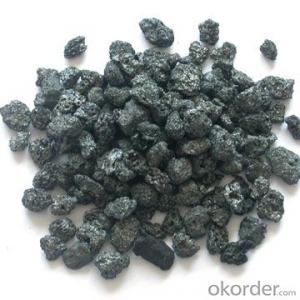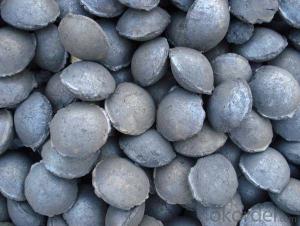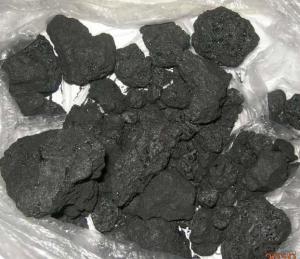Calcined Petroleum Coke with High Fixed Carbon
- Loading Port:
- Tianjin
- Payment Terms:
- TT OR LC
- Min Order Qty:
- 1 m.t.
- Supply Capability:
- 10000000 m.t./month
OKorder Service Pledge
OKorder Financial Service
You Might Also Like
1.Structure of Calcined Petroleum Coke Description
Calcined Petroleum Coke is made from raw petroleum coke,which is calcined in furnace at a high temperature(1200-1300℃).CPC/Calcined Petroleum Coke is widely used in steelmaking,castings manufacture and other metallurgical industry as a kind of recarburizer because of its high fixed carbon content,low sulfur content and high absorb rate.Besides,it is also a best kind of raw materials for producing artifical graphite(GPC/Graphitized Petroleum Coke) under the graphitizing temperature(2800℃).
2.Main Features of the Calcined Petroleum Coke
High-purity graphitized petroleum coke is made from high quality petroleum coke under a temperature of 2,500-3,500°C. As a high-purity carbon material, it has characteristics of high fixed carbon content, low sulfur, low ash, low porosity etc.It can be used as carbon raiser (Recarburizer) to produce high quality steel,cast iron and alloy.It can also be used in plastic and rubber as an additive.
3. Calcined Petroleum Coke Images
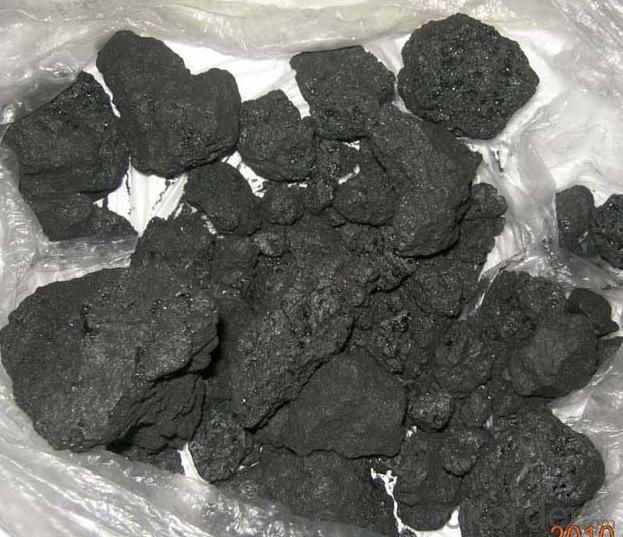
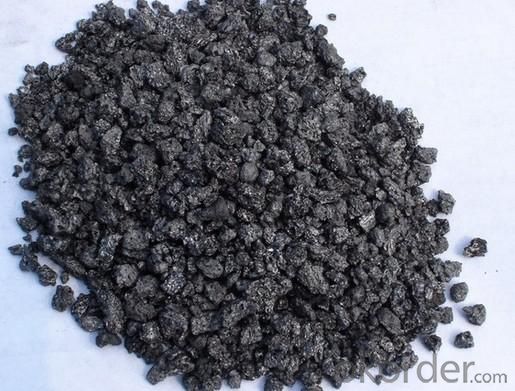
4. Calcined Petroleum Coke Specification
CALCINED PETROLEUM COKE
SPECS:
1) FC:98%MIN SULFUR:2.0%MAX MOISTURE:0.5%MAX
2) FC:98.5%MIN SULFUR:0.5%MAX MOISTURE:0.5%MAX
SIZE:1-5MM 90% MIN OR TO ORDER,
packing: IN 25kg plastic woven bag into 1 MT BAGS
5.FAQ of Calcined Petroleum Coke
1). Q: Are you a factory or trading company?
A: We are a factory.
2). Q: Where is your factory located? How can I visit there?
A: Our factory is located in ShanXi, HeNan, China. You are warmly welcomed to visit us!
3). Q: How can I get some samples?
A: Please connect me for samples
4). Q: Can the price be cheaper?
A: Of course, you will be offered a good discount for big amount.
- Q:How does carbon contribute to the structure of DNA?
- Carbon is an essential element in the structure of DNA as it forms the backbone of the molecule. Carbon atoms in the sugar-phosphate backbone of DNA provide stability and flexibility, allowing the molecule to twist and fold into its double helix shape. Additionally, carbon atoms are also present in the nitrogenous bases, which are the building blocks of the genetic code. Overall, carbon's presence in DNA is crucial for its overall structure and function in storing and transmitting genetic information.
- Q:Want advanced reinforcement, but I do not know where the high furnace rock carbon, looking for someone to guide...
- Landlord Hello, there are 51 bags sold in the mall, send the hope to adopt, thank you!
- Q:What are the limitations of carbon dating?
- Carbon dating, also known as radiocarbon dating, is a widely used method for determining the age of organic materials up to 50,000 years old. While it has revolutionized the field of archaeology and paleontology, it does have certain limitations that researchers must be aware of. One limitation of carbon dating is its inability to accurately date materials beyond the 50,000-year mark. This is due to the fact that carbon-14, the isotope used in carbon dating, has a half-life of only 5,730 years. As a result, after several half-lives, there is not enough carbon-14 remaining in a sample to accurately determine its age. Another limitation is the reliance on organic material. Carbon dating can only be used on organic materials such as bones, shells, wood, and charcoal. This means that it is not applicable to inorganic materials like rocks or minerals. Additionally, the presence of certain contaminants in the sample, such as humic acids or carbonates, can distort the carbon dating results. Furthermore, carbon dating is limited by the fact that it can only provide a relative age for the sample. It determines the ratio of carbon-14 to carbon-12 in the sample and compares it to the known ratio in the atmosphere. By assuming that the ratio has remained constant over time, an estimate of the sample's age can be made. However, variations in the atmospheric carbon-14 levels over time can affect the accuracy of this method. Additionally, carbon dating can be influenced by the presence of nuclear testing and other human activities that have released significant amounts of carbon-14 into the atmosphere. This is known as the "bomb effect" and can result in artificially younger dates for samples collected after the mid-20th century. Lastly, carbon dating can be limited by the size and condition of the sample. In order to obtain accurate results, a sufficient amount of organic material is required for analysis. This can be challenging when dealing with small or degraded samples, as the carbon-14 content may be insufficient or contaminated. In conclusion, while carbon dating is a valuable tool for determining the age of organic materials, it does have certain limitations. Researchers must consider these limitations and be cautious when interpreting the results, taking into account the age range, sample type, presence of contaminants, atmospheric variations, and sample size.
- Q:How does carbon impact the energy balance of the Earth?
- Carbon impacts the energy balance of the Earth by trapping heat in the atmosphere through the greenhouse effect. This leads to an increase in global temperatures, known as global warming, and disrupts the natural equilibrium of energy flow on the planet.
- Q:What are the sources of carbon emissions?
- Human activities, particularly the burning of fossil fuels like coal, oil, and natural gas, are the primary cause of carbon emissions. The largest contributor to carbon emissions is the utilization of fossil fuels for generating electricity, transportation, and various industrial processes. Power plants that utilize coal and natural gas play a significant role in emitting carbon, as do vehicles that run on gasoline and diesel. Besides, carbon emissions also result from industrial processes, mainly in sectors like cement production and steel manufacturing. These processes release carbon dioxide (CO2) during the chemical reactions involved in producing these materials. Deforestation and changes in land use are another significant source of carbon emissions. When forests are cleared, the carbon stored in trees is released into the atmosphere as CO2. Moreover, the loss of forests reduces the Earth's capacity to absorb CO2 through photosynthesis, worsening the situation. Agricultural activities, particularly livestock farming, contribute to carbon emissions through the release of methane (CH4) from animals' digestive systems and the decay of organic matter. The use of synthetic fertilizers in agriculture further adds to carbon emissions as they release nitrous oxide (N2O), a potent greenhouse gas. Other sources of carbon emissions include waste management practices, particularly the decomposition of organic waste in landfills, and specific industrial processes that release other greenhouse gases like hydrofluorocarbons (HFCs) and sulfur hexafluoride (SF6). It is crucial to note that although natural processes like volcanic eruptions and wildfires also release carbon dioxide into the atmosphere, their contribution is significantly smaller compared to human-induced emissions.
- Q:How does carbon impact the pH balance of oceans?
- Carbon dioxide (CO2) dissolved in seawater reacts with water molecules to form carbonic acid, which lowers the ocean's pH. This decrease in pH, known as ocean acidification, has detrimental effects on marine life, especially organisms that rely on calcium carbonate to build their shells or skeletons. It disrupts the delicate balance of the marine ecosystem, affecting the growth, reproduction, and survival of various species, ultimately posing a threat to the biodiversity and health of our oceans.
- Q:What are the impacts of carbon emissions on human respiratory diseases?
- Carbon emissions, particularly those from burning fossil fuels, have significant impacts on human respiratory diseases. The release of carbon dioxide and other greenhouse gases into the atmosphere contributes to climate change, which in turn affects air quality and worsens respiratory conditions. One of the main consequences of carbon emissions is the increase in air pollution. Fossil fuel combustion releases various pollutants, such as nitrogen oxides, sulfur dioxide, and particulate matter, which can irritate and damage the respiratory system. These pollutants can trigger and exacerbate respiratory diseases such as asthma, bronchitis, and chronic obstructive pulmonary disease (COPD). They can also lead to the development of respiratory infections and reduce lung function, making individuals more susceptible to respiratory illnesses. Climate change, driven by carbon emissions, also worsens respiratory health. Rising temperatures and changing weather patterns contribute to the proliferation of allergens and air pollutants, leading to more frequent and severe allergic reactions and exacerbations of respiratory conditions. Additionally, climate change can extend the pollen season and increase the production of mold spores, triggering asthma attacks and other respiratory symptoms. Furthermore, carbon emissions contribute to the formation of ground-level ozone, a harmful pollutant. Higher temperatures and increased sunlight due to climate change promote the chemical reactions that produce ozone. Ground-level ozone can irritate the airways, causing coughing, shortness of breath, and chest pain. It can also worsen existing respiratory diseases and impair lung function, particularly in vulnerable populations such as children, the elderly, and people with pre-existing respiratory conditions. In summary, carbon emissions have profound impacts on human respiratory diseases. They contribute to air pollution, which aggravates respiratory conditions and increases the risk of respiratory infections. Additionally, climate change, driven by carbon emissions, intensifies the production of allergens and air pollutants, exacerbating respiratory symptoms and reducing lung function. Taking effective measures to reduce carbon emissions is crucial not only for mitigating climate change but also for safeguarding respiratory health.
- Q:Carbon fiber refractory?
- 3, pre oxidized carbon fiber cloth, can withstand 200--300 degrees of high temperature
- Q:How are carbon fibers produced?
- Carbon fibers are produced through a multi-step process known as carbonization. The process starts with a raw material called precursor, which is usually a polymer-based material such as polyacrylonitrile (PAN), rayon, or pitch. The first step involves spinning the precursor material into long, thin fibers. This can be done through various methods such as melt spinning, dry spinning, or wet spinning, depending on the type of precursor used. Once the fibers are formed, they undergo a stabilization process. This involves heating the fibers in the presence of oxygen at a relatively low temperature, usually around 200-300 degrees Celsius. Stabilization helps to remove any volatile components from the fibers and align the molecular structure in a way that enhances its heat resistance and strength. After stabilization, the fibers are subjected to a high-temperature treatment called carbonization. This process takes place in a furnace with little or no oxygen, typically at temperatures above 1000 degrees Celsius. During carbonization, the fibers are heated to a point where most of the non-carbon atoms are expelled, leaving behind a highly pure carbon structure. The final step in the production of carbon fibers is surface treatment. This involves applying a coating or treatment to the fibers to improve their bonding properties and adhesion with other materials. The surface treatment can be done using various methods such as sizing, coating, or plasma treatment. Overall, the production of carbon fibers involves a combination of spinning, stabilization, carbonization, and surface treatment processes to create fibers with exceptional strength, stiffness, and low weight. These properties make carbon fibers highly sought after in various industries, including aerospace, automotive, sports, and construction.
- Q:How does carbon pricing work?
- Carbon pricing is a market-based approach that puts a price on carbon emissions, either through a carbon tax or a cap-and-trade system. The aim is to create an economic incentive for businesses and individuals to reduce their greenhouse gas emissions. By putting a price on carbon, it encourages companies to invest in cleaner technologies, reduce their emissions, or purchase emissions allowances from other entities. This mechanism helps to address climate change by reducing carbon dioxide emissions and promoting the transition to a low-carbon economy.
1. Manufacturer Overview |
|
|---|---|
| Location | |
| Year Established | |
| Annual Output Value | |
| Main Markets | |
| Company Certifications | |
2. Manufacturer Certificates |
|
|---|---|
| a) Certification Name | |
| Range | |
| Reference | |
| Validity Period | |
3. Manufacturer Capability |
|
|---|---|
| a)Trade Capacity | |
| Nearest Port | |
| Export Percentage | |
| No.of Employees in Trade Department | |
| Language Spoken: | |
| b)Factory Information | |
| Factory Size: | |
| No. of Production Lines | |
| Contract Manufacturing | |
| Product Price Range | |
Send your message to us
Calcined Petroleum Coke with High Fixed Carbon
- Loading Port:
- Tianjin
- Payment Terms:
- TT OR LC
- Min Order Qty:
- 1 m.t.
- Supply Capability:
- 10000000 m.t./month
OKorder Service Pledge
OKorder Financial Service
Similar products
New products
Hot products
Related keywords
